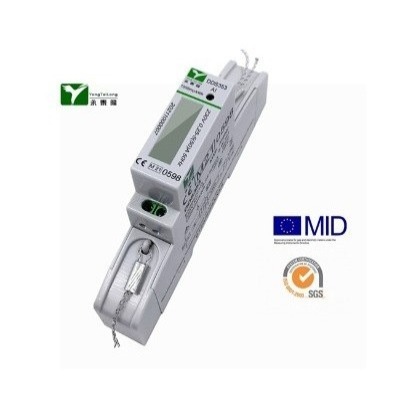 In the power industry, e-metering is mainly used for power measurement. Power measurement is an important task in the power system, involving accurate measurement and recording of power parameters such as voltage, current, power, and energy. E-metering equipment can quickly and accurately obtain these power parameters and digitize them for convenient storage and processing.
In the power industry, e-metering is mainly used for power measurement. Power measurement is an important task in the power system, involving accurate measurement and recording of power parameters such as voltage, current, power, and energy. E-metering equipment can quickly and accurately obtain these power parameters and digitize them for convenient storage and processing.
E-metering equipment typically includes current transformers, voltage transformers, and other devices that enable accurate sampling of power parameters. Current transformers convert large currents into small ones and transmit them to e-metering equipment for measurement. Voltage transformers convert high voltage into low voltage and transmit it to e-metering equipment for measurement. Through e-metering equipment, we can quickly and accurately obtain power parameters, providing data support for the operation and management of the power system.
In addition to its application in power measurement, e-metering can also be used for power monitoring. Power monitoring involves real-time monitoring of various nodes in the power system to ensure its stable and reliable operation. E-metering equipment can achieve real-time monitoring and recording of various nodes in the power system and transmit data to monitoring centers or management systems for remote monitoring and management by staff.
E-metering equipment typically includes voltmeters, ammeters, wattmeters, and energy meters, which can perform real-time monitoring and recording of various nodes in the power system. For example, energy meters can record the energy consumption in the power system and transmit it to monitoring centers or management systems, while voltmeters can monitor voltage fluctuations in the power system and transmit them to monitoring centers or management systems. Through these e-metering devices, we can achieve real-time monitoring and management of various nodes in the power system, ensuring its stable and reliable operation.
Smart grid is a new type of power grid system that has developed in recent years, which adopts advanced information technology, communication technology, sensing technology, control technology, and computer technology, realizing the intelligent management and control of the power system. E-metering also has a wide range of applications in smart grids.
In smart grids, e-metering equipment typically constitutes various nodes of the smart grid together with sensors, actuators, and other equipment. These nodes can achieve real-time monitoring and control of various devices and transmit data to the central control system of the smart grid. Based on collected data and other information, the central control system of the smart grid can conduct intelligent analysis and optimization of the power system to achieve rational allocation and efficient use of power resources.
Smart energy meters can record the energy consumption of each household and transmit it to the central control system of the smart grid. The central control system can analyze the energy consumption of each household and predict future energy demand. E-metering equipment in smart grids can also achieve fault diagnosis, load forecasting, and safety monitoring of the power system, improving its reliability and stability.
E-metering has a wide range of applications in the power industry. It not only improves the accuracy and reliability of power measurement but also realizes the intelligent management and control of power monitoring and smart grids. With the continuous development and progress of technology, e-metering will play an even more important role in the future power industry.

 English
English 简体中文
简体中文










.png?imageView2/2/w/500/h/500/format/png/q/100)



